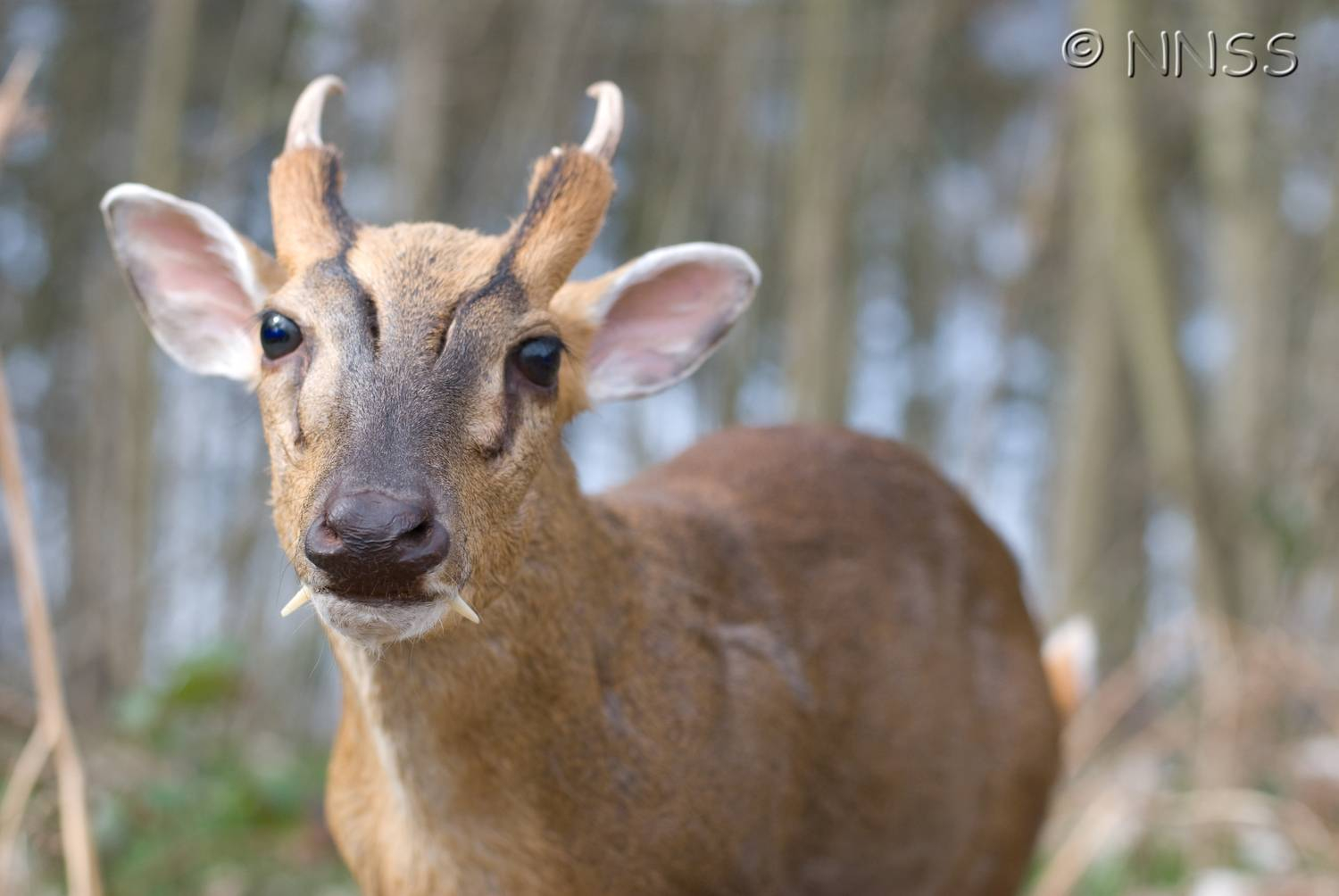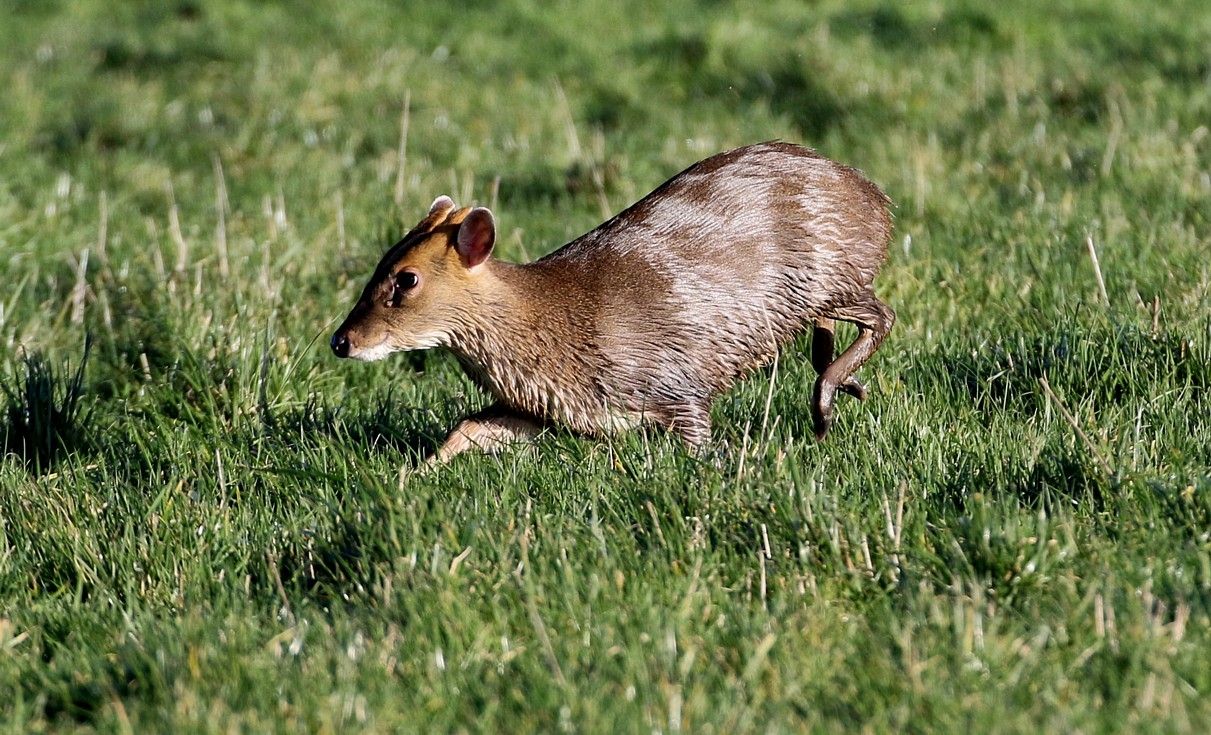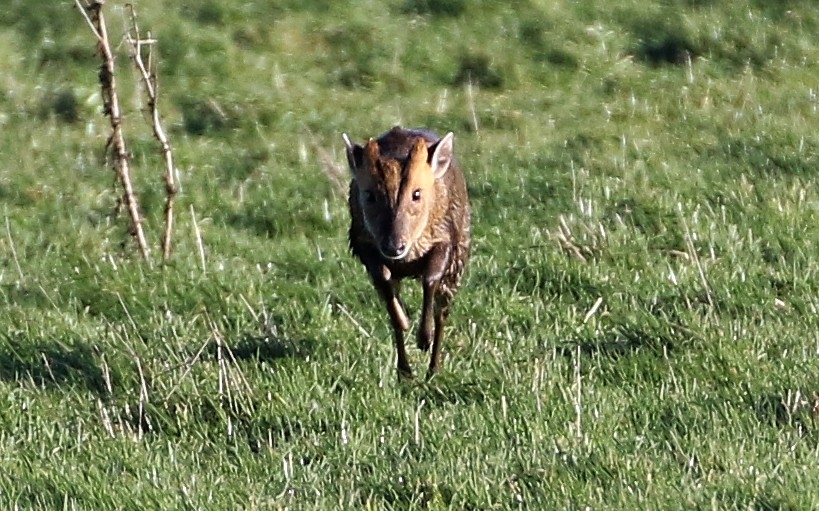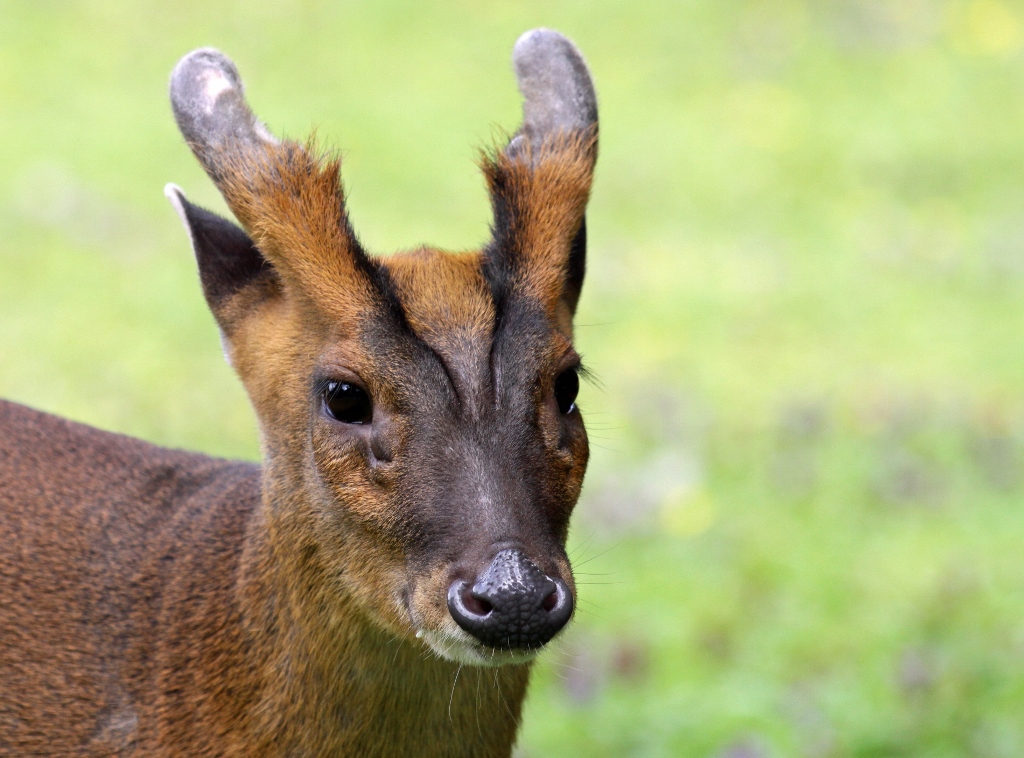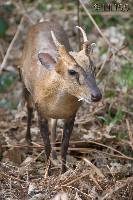Common name(s): Muntjac deer; Reeves’s muntjac, Chinese muntjac, Barking deer
Why the concern?
- Muntjac deer are listed as an invasive species in Ireland and one of 49 regulated invasive alien species in Europe (https://invasives.ie/about/ias-union-concern/).
- Muntjac browsing in woodland can clear areas of brambles and other shrubs, and prevent tree regeneration, with profound effects on coppice woodlands, the structure of the shrub and ground layers and the animals that depend on them for food or shelter, such as birds and butterflies.
- Muntjac occasionally browse on growing crops and can cause serious losses in market gardens, allotments, and orchards. In forestry, trees often require protection from deer during their early years.
- Muntjac deer can cause road traffic accidents. In Britain, Muntjac contribute a substantial part of the almost 30,000 traffic accidents a year that are believed to be the result of collisions with invasive non-native deer.
What does it look like?
- This is a small, thickset deer with reddish fur and relatively short legs.
- It measures approximately 50cm at the shoulder in males and 47cm in females.
- When disturbed it shows a conspicuous white underside to the tail which can be seen as the animal runs away.
- Males have short simple antlers and two blackish lines that run across the forehead towards the snout. Females and young have a blackish pattern on the forehead.
Where might I see it? Muntjac are found in a variety of lowland woodland types, preferring a dense understorey and access to arable farmland. They can occur in urban parks and large gardens. They are sometimes seen on road sides running away from a passer-by or from vehicles.


